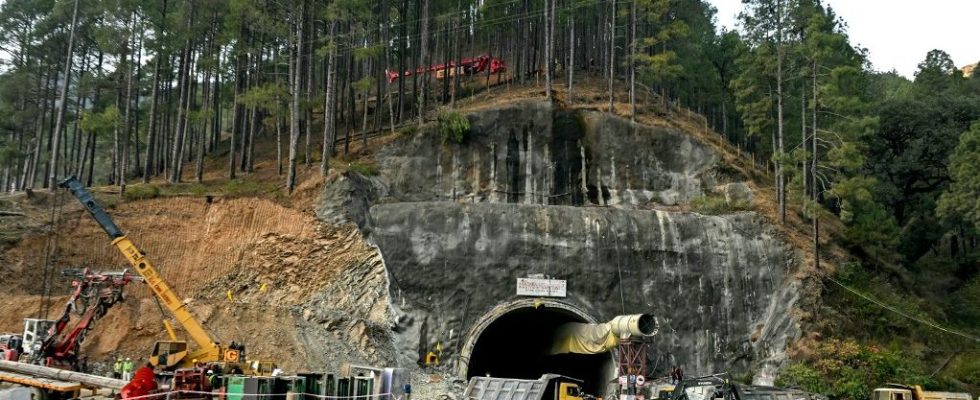The Indian army on Sunday transported new “essential” equipment to the site of a partly collapsed tunnel in the Himalayas to continue the complex operations which are now taking place on three fronts in order to rescue 41 workers trapped since fourteen days.
The Indian Air Force said on Sunday that it had “rushed” to send a third load of equipment in the face of multiple obstacles that have slowed down rescue operations since the partial collapse of the Silkyara tunnel under construction on 12 November, in the Himalayan state ofUttarakhand.
A plasma cutter to overcome the last obstacles
Rescue officials should now have at their disposal a plasma cutter which should make it possible to eliminate the thick metal beams and construction vehicles which obstruct the drilling and insertion of a large tube through which the workers could find freedom.
During previous rescue operations, a drilling machine broke just nine meters from where the 41 workers were trapped. According to the Air Force, this “essential” equipment comes from the National Defense Research and Development Organization, the government’s defense technology research arm. The military did not provide additional details.
A vertical drilling to try to reach the tunnel
Uttarakhand Chief Minister Pushkar Singh Dhami on Saturday announced the start of vertical drilling to try to reach the tunnel, about 89 meters below, in a complex excavation operation above the stranded men , especially in an area that has already suffered collapse.
In the tunnel, the men have a relatively large space, approximately two kilometers long and 8.50 m high. Work has also started to dig at the other end of the road tunnel but the breakthrough will be much longer, estimated at around 480 meters.
The trapped workers have been surviving for fourteen days thanks to the delivery of air, food, water and electricity carried through a conduit into which an endoscopic camera has been inserted. On Tuesday, their families were able to see them for the first time since the tunnel collapsed.
The morale of the workers would be good
According to Mr. Dhami, the workers have “good morale” and have a telephone exchange set up so that they can communicate with their families.
Since Wednesday, the authorities have said several times that they expect a happy outcome in the coming hours.
But the government immediately warned that the situation was “likely to evolve due to technical problems, the difficult terrain (that constitutes) the Himalayas, and unforeseen events”.
After yet another interruption of drilling on Saturday, Indrajeet Kumar, worried about the fate of his brother Vishwajeet trapped in the tunnel, told the Times of India, “feeling like crying”, unable to explain such a long delay in getting them out .
Syed Ata Hasnain, one of those responsible for relief operations and a former general, called on Saturday for “patience”. “A very difficult operation is underway,” he told reporters. “When you have to deal with the mountains, you can’t predict anything,” he added. “This situation looks exactly like a war. »

